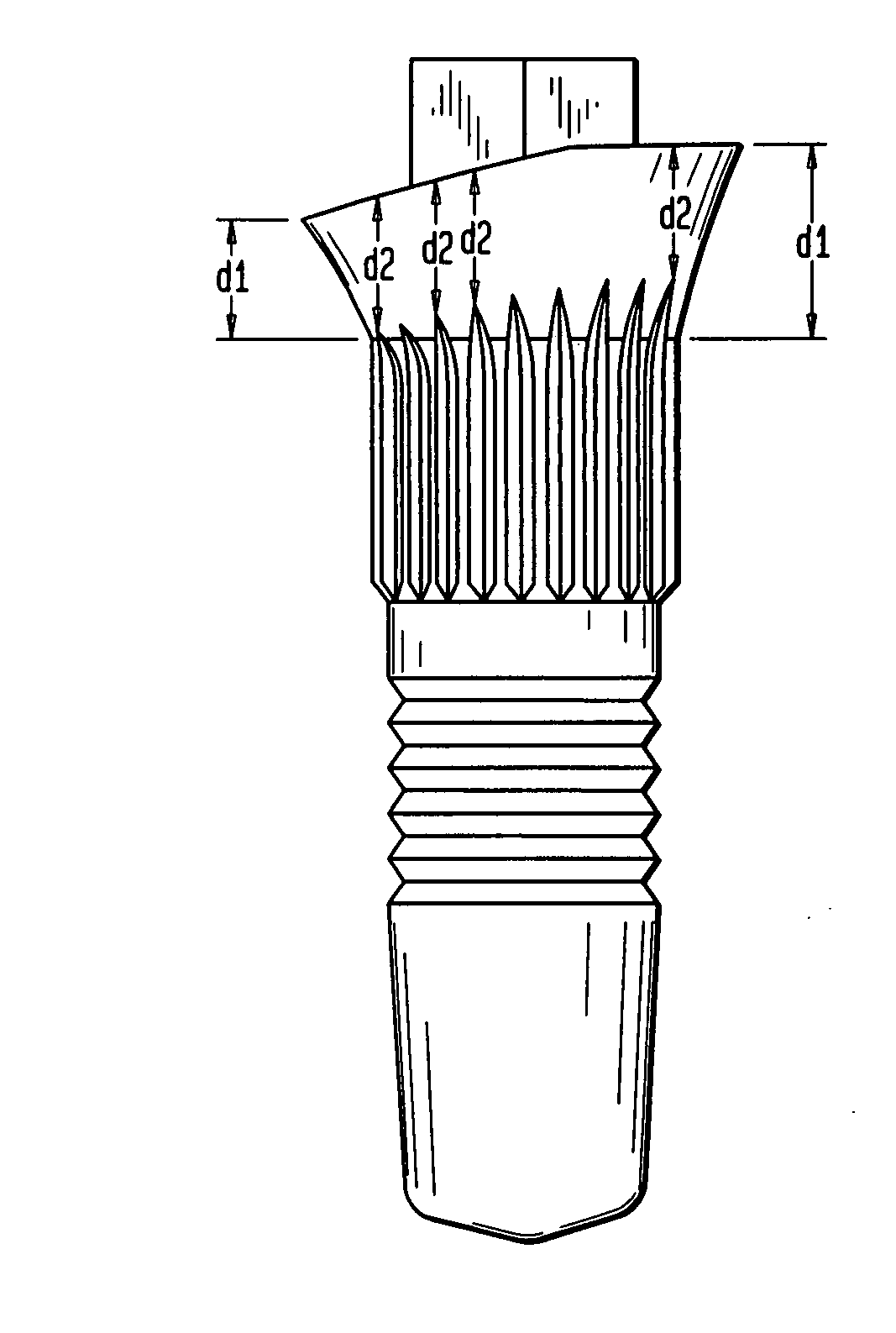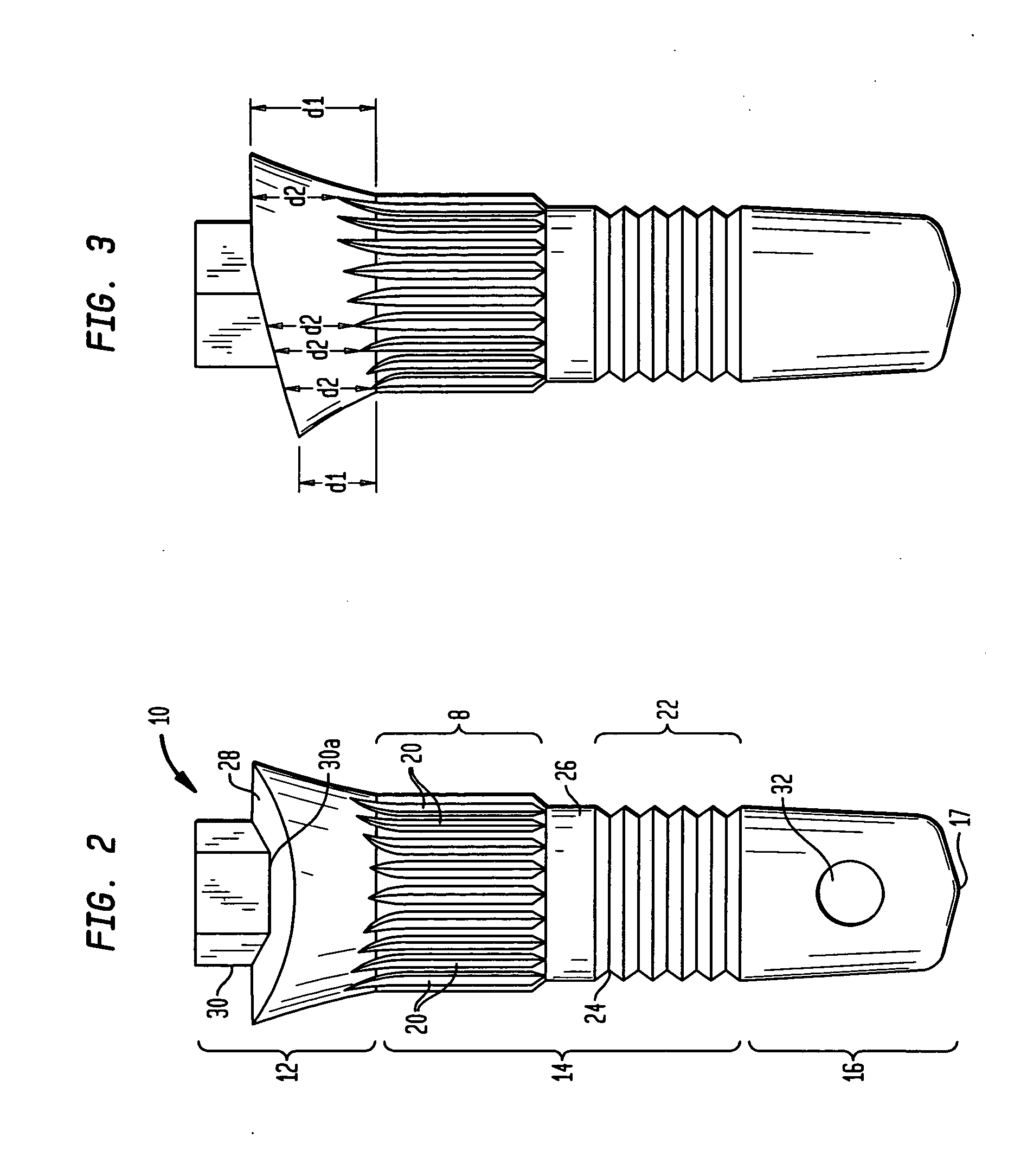Dental implants and dental implant/prosthetic tooth systems
a technology of dental implants and implants, which is applied in dental implants, dental surgery, medical science, etc., can solve the problems of weakening primary stability and osteointegration, affecting the height of the top portion, and the lack of primary stability of the upper jaw dental implants
- Summary
- Abstract
- Description
- Claims
- Application Information
AI Technical Summary
Benefits of technology
Problems solved by technology
Method used
Image
Examples
Embodiment Construction
[0030]FIG. 2 is a side view of the buccal side of a dental implant 10 in accordance with one embodiment of the present invention. FIG. 3 is a side view of the proximal side of the dental implant 10 of FIG. 2. The dental implant 10 is preferably a single piece with a head portion 12, a body portion 14 and a tip portion 16, extending along a longitudinal axis “L”.
[0031] The body portion is cylindrical and includes a first section 18 with a plurality of longitudinal grooves 20 substantially parallel to the longitudinal axis L of the implant 10, proximate the head portion 12. Preferably, at least some of the longitudinal grooves 20 extend into the head portion 12. The depth of each groove 20 may be about 1 mm. The outer diameter of the first section is preferably from about 3.75 mm to about 5.00 mm depending on the type of tooth being replaced and the position of the tooth in the mouth.
[0032] The cylindrical body portion 14 includes a second section 22 with a circumferential spiral th...
PUM
 Login to View More
Login to View More Abstract
Description
Claims
Application Information
 Login to View More
Login to View More - R&D
- Intellectual Property
- Life Sciences
- Materials
- Tech Scout
- Unparalleled Data Quality
- Higher Quality Content
- 60% Fewer Hallucinations
Browse by: Latest US Patents, China's latest patents, Technical Efficacy Thesaurus, Application Domain, Technology Topic, Popular Technical Reports.
© 2025 PatSnap. All rights reserved.Legal|Privacy policy|Modern Slavery Act Transparency Statement|Sitemap|About US| Contact US: help@patsnap.com



